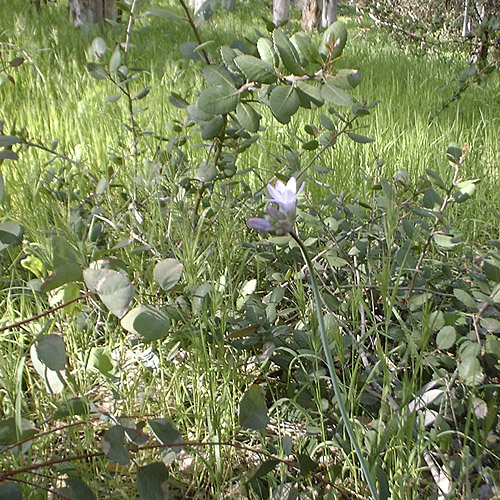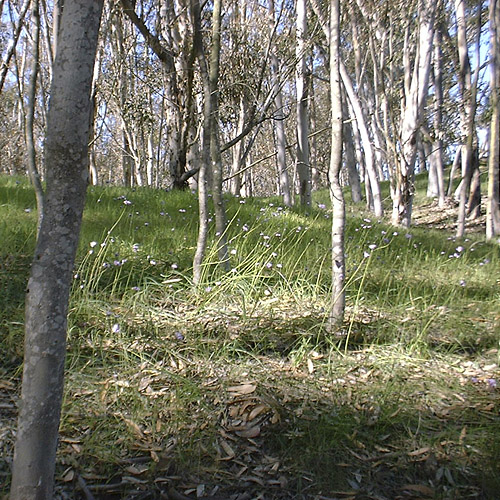A couple posts ago I mentioned dichelostemma blooming in the garden and I was thinking that they were probably also blooming wild in the natural spaces around me. I took a lunchtime walk through one of the semi-wild areas on the north part of the campus of the University of California, San Diego. The area has been set aside as a natural preserve, although “natural” in this case is actually a canyon of native plants mixed in with some earlier 20th century plantings of eucalyptus. Fake as it may be as a genuine Southern California chaparral ecosystem, the edges where the grove meets the scrub starts to take on more native flavors.
There had been heavy rains this past January, followed by occasional wet periods, so the ground was still moist in spots. The weather was now turning warm, sunny and spring-like. Grasses were growing exuberantly. It wasn’t long before I started to notice occasional flowers in the understory. Although the spaces under the eucalyptus prove hostile to most flowering plants other than the occasional also-imported black mustard, the blue dicks were pretty content to be there, a single plant here, big rafts of them there.

A flowering head of Dichelostemma capitatum, mixed in with the grasses and eucalyptus

A larger stand of them, with their little flower heads raised up two feet or more in the dappled shade
I was tuned in to what I was seeing, but in the back of my mind I was aware that back in my garden the same species of plants was also blooming. Back home the blue dicks are part of a long continuum of “springtime” flowers that begin with the first narcissus in October and continue into a number of plants that have yet to bloom. But in the wild areas of Southern California this is it. Spring is short and–in a wet year like this one–intense, orgiastic. As the weather warms the rains will stop. The grasses will die out and the flowers will fade out. Soon the long brown season will begin. But in the fictionalized natural world of my garden, spring will be here for several more months. I’ll enjoy it for sure. But somehow it seems a little wrong.

2 thoughts on “into the wild”